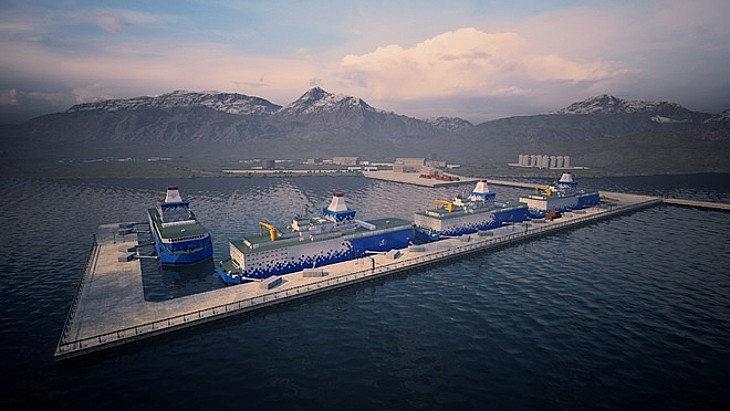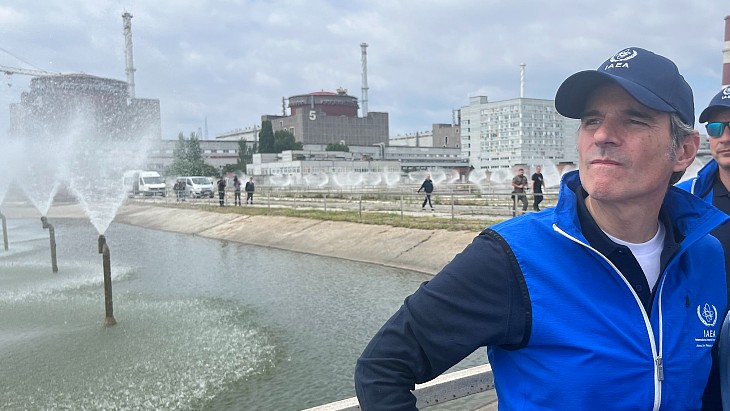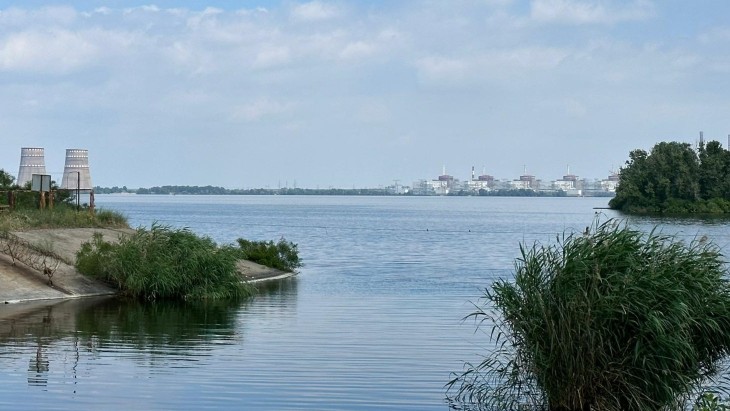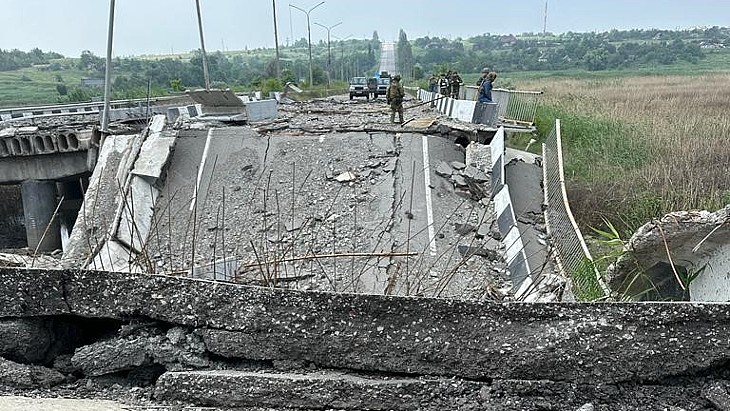Bacteria Breakthrough Could Simplify Rare Earth Element Processing
- The research from Penn State discovered a new method of separating rare earth elements using bacterial protein, which has a unique ability to distinguish between different rare earths.
- The bacterial protein was isolated from a specific type of bacteria found naturally in English oak buds and showed a strong capability to differentiate between lighter and heavier rare earth elements.
- This discovery could lead to more efficient, environmentally friendly mining and recycling practices for the tech sector, fundamentally changing how critical minerals like rare earths are harvested and purified.
Penn State scientists have discovered a new mechanism by which bacteria can select between different rare earth elements. That is using the ability of a bacterial protein to bind to another unit of itself, or ‘dimerize,’ when it is bound to certain rare earths, but prefer to remain a single unit, or ‘monomer,’ when bound to others.
The research paper reporting the discovery has been published in the journal Nature.
Penn State researchers have discovered a protein found naturally in a bacterium (Hansschlegelia quercus) isolated from English oak buds exhibits strong capabilities to differentiate between rare earths. Harnessing its power could revolutionize the entire tech sector by fundamentally changing how critical minerals like rare earths are harvested and purified. Image Credit: Penn State. Creative Commons
The discovery is important because rare earth elements, like neodymium and dysprosium, are critical components to almost all modern technologies, from smartphones to hard drives, but they are notoriously hard to separate from the Earth’s crust and from one another.
By figuring out how this molecular handshake works at the atomic level, the researchers have found a way to separate these similar metals from one another quickly, efficiently, and under normal room temperature conditions. This strategy could lead to more efficient, greener mining and recycling practices for the entire tech sector, the researchers state.
Joseph Cotruvo Jr., associate professor of chemistry at Penn State and lead author of the paper said, “Biology manages to differentiate rare earths from all the other metals out there – and now, we can see how it even differentiates between the rare earths it finds useful and the ones it doesn’t. We’re showing how we can adapt these approaches for rare earth recovery and separation.”
Rare earth elements, which include the lanthanide metals, are in fact relatively abundant, Cotruvo explained, but they are what mineralogists call “dispersed,” meaning they’re mostly scattered throughout the planet in low concentrations.
“If you can harvest rare earths from devices that we already have, then we may not be so reliant on mining it in the first place,” Cotruvo said. However, he added that regardless of source, the challenge of separating one rare earth from another to get a pure substance remains.
“Whether you are mining the metals from rock or from devices, you are still going to need to perform the separation. Our method, in theory, is applicable for any way in which rare earths are harvested,” he said.
All the same — and completely different
In simple terms, rare earths are 15 elements on the periodic table – the lanthanides, with atomic numbers 57 to 71 – and two other elements with similar properties that are often grouped with them. The metals behave similarly chemically, have similar sizes, and, for those reasons, they often are found together in the Earth’s crust. However, each one has distinct applications in technologies.
Conventional rare earth separation practices require using large amounts of toxic chemicals like kerosene and phosphonates, similar to chemicals that are commonly used in insecticides, herbicides and flame retardants, Cotruvo explained. The separation process requires dozens or even hundreds of steps, using these highly toxic chemicals, to achieve high-purity individual rare earth oxides.
“There is getting them out of the rock, which is one part of the problem, but one for which many solutions exist,” Cotruvo said. “But you run into a second problem once they are out, because you need to separate multiple rare earths from one another. This is the biggest and most interesting challenge, discriminating between the individual rare earths, because they are so alike. We’ve taken a natural protein, which we call lanmodulin or LanM, and engineered it to do just that.”
Learning from nature
Cotruvo and his lab turned to nature to find an alternative to the conventional solvent-based separation process, because biology has already been harvesting and harnessing the power of rare earths for millennia, especially in a class of bacteria called “methylotrophs” that often are found on plant leaves and in soil and water and play an important role in how carbon moves through the environment.
Six years ago, the lab isolated lanmodulin from one of these bacteria, and showed that it was unmatched – over 100 million times better – in its ability to bind lanthanides over common metals like calcium. Through subsequent work they showed that it was able to purify rare earths as a group from dozens of other metals in mixtures that were too complex for traditional rare earth extraction methods. However, the protein was less good at discriminating between the individual rare earths.
Cotruvo explained that for the new study detailed in Nature, the team identified hundreds of other natural proteins that looked roughly like the first lanmodulin but homed in on one that was different enough – 70% different – that they suspected it would have some distinct properties. This protein is found naturally in a bacterium (Hansschlegelia quercus) isolated from English oak buds.
The researchers found that the lanmodulin from this bacterium exhibited strong capabilities to differentiate between rare earths. Their studies indicated that this differentiation came from an ability of the protein to dimerize and perform a kind of handshake. When the protein binds one of the lighter lanthanides, like neodymium, the handshake (dimer) is strong. By contrast, when the protein binds to a heavier lanthanide, like dysprosium, the handshake is much weaker, such that the protein favors the monomer form.
“This was surprising because these metals are very similar in size,” Cotruvo said. “This protein has the ability to differentiate at a scale that is unimaginable to most of us – a few trillionths of a meter, a difference that is less than a tenth of the diameter of an atom.”
Fine-tuning rare earth separations
To visualize the process at such a small scale, the researchers teamed up with Amie Boal, Penn State professor of chemistry, biochemistry and molecular biology, who is a co-author on the paper. Boal’s lab specializes in a technique called X-ray crystallography, which allows for high-resolution molecular imaging.
The researchers determined that the protein’s ability to dimerize dependent on the lanthanide to which it was bound came down to a single amino acid – 1% of the whole protein – that occupied a different position with lanthanum (which, like neodymium, is a light lanthanide) than with dysprosium.
Because this amino acid is part of a network of interconnected amino acids at the interface with the other monomer, this shift altered how the two protein units interacted. When an amino acid that is a key player in this network was removed, the protein was much less sensitive to rare earth identity and size. The findings revealed a new, natural principle for fine-tuning rare earth separations, based on propagation of miniscule differences at the rare earth binding site to the dimer interface.
Using this knowledge, their collaborators at Lawrence Livermore National Laboratory showed that the protein could be tethered to small beads in a column, and that it could separate the most important components of permanent magnets, neodymium and dysprosium, in a single step, at room temperature and without any organic solvents.
“While we are by no means the first scientists to recognize that metal-sensitive dimerization could be a way of separating very similar metals, mostly with synthetic molecules,” Cotruvo said, “this is the first time that this phenomenon has been observed in nature with the lanthanides. This is basic science with applied outcomes. We’re revealing what nature is doing and it’s teaching us what we can do better as chemists.”
Cotruvo believes that the concept of binding rare earths at a molecular interface, such that dimerization is dependent on the exact size of the metal ion, can be a powerful approach for accomplishing challenging separations.
“This is the tip of the iceberg,” he said. “With further optimization of this phenomenon, the toughest problem of all – efficient separation of rare earths that are right next to each other on the periodic table – may be within reach.”
A patent application was filed by Penn State based on this work and the team is currently scaling up operations, fine-tuning and streamlining the protein with the goal of commercializing the process.
Other Penn State co-authors are Joseph Mattocks, Jonathan Jung, Chi-Yun Lin, Neela Yennawar, Emily Featherston and Timothy Hamilton. Ziye Dong, Christina Kang-Yun and Dan Park of the Lawrence Livermore National Laboratory also co-authored the paper.
***
This is definitely exciting work, important and worthwhile. The rare earth elements are essential for the continued growth of much of the high tech economy and are also used as political weapons. Breaking out from today’s circumstances is crucial for many industries and their products.
Yet for now, this technology is in the discovery phase. It is a very long way to commercial scale. But it is so important and the amount of capital and cash flow at stake is sure to drive this technology along.
Let's not overlook the amazement factor here. This technology is using organic compounds to do what has been the province of inorganic compounds. One might hope that not only will the rare earth elements become more available and sensibly priced, the processing might be much more environmentally friendly.
By Brian Westenhaus via New Energy and Fuel
.jpg?ext=.jpg) An aerial view of the Konrad 2 site (Image: BGE)
An aerial view of the Konrad 2 site (Image: BGE).jpg?ext=.jpg) A cutaway of the TMSR-LF1 reactor (Image: SINAP)
A cutaway of the TMSR-LF1 reactor (Image: SINAP).jpg?ext=.jpg) Drone Delivery Canada hope to revolutionise deliveries in the healthcare segment (Image: DDC)
Drone Delivery Canada hope to revolutionise deliveries in the healthcare segment (Image: DDC) (Image: Rosatom)
(Image: Rosatom) There is sufficient water at the plant for cooling for months (Image: IAEA)
There is sufficient water at the plant for cooling for months (Image: IAEA)
 A destroyed bridge means part of the journey was on foot (Image: IAEA)
A destroyed bridge means part of the journey was on foot (Image: IAEA)
.jpg?ext=.jpg) How the KP-FHR could look (Image: Kairos)
How the KP-FHR could look (Image: Kairos).jpg?ext=.jpg) The Piketon centrifuge cascade (Image: Centrus)
The Piketon centrifuge cascade (Image: Centrus).jpg?ext=.jpg) US uranium purchases continue to be dominated by foreign suppliers (amounts are thousands of pounds U3O8e) (Image: EIA)
US uranium purchases continue to be dominated by foreign suppliers (amounts are thousands of pounds U3O8e) (Image: EIA)